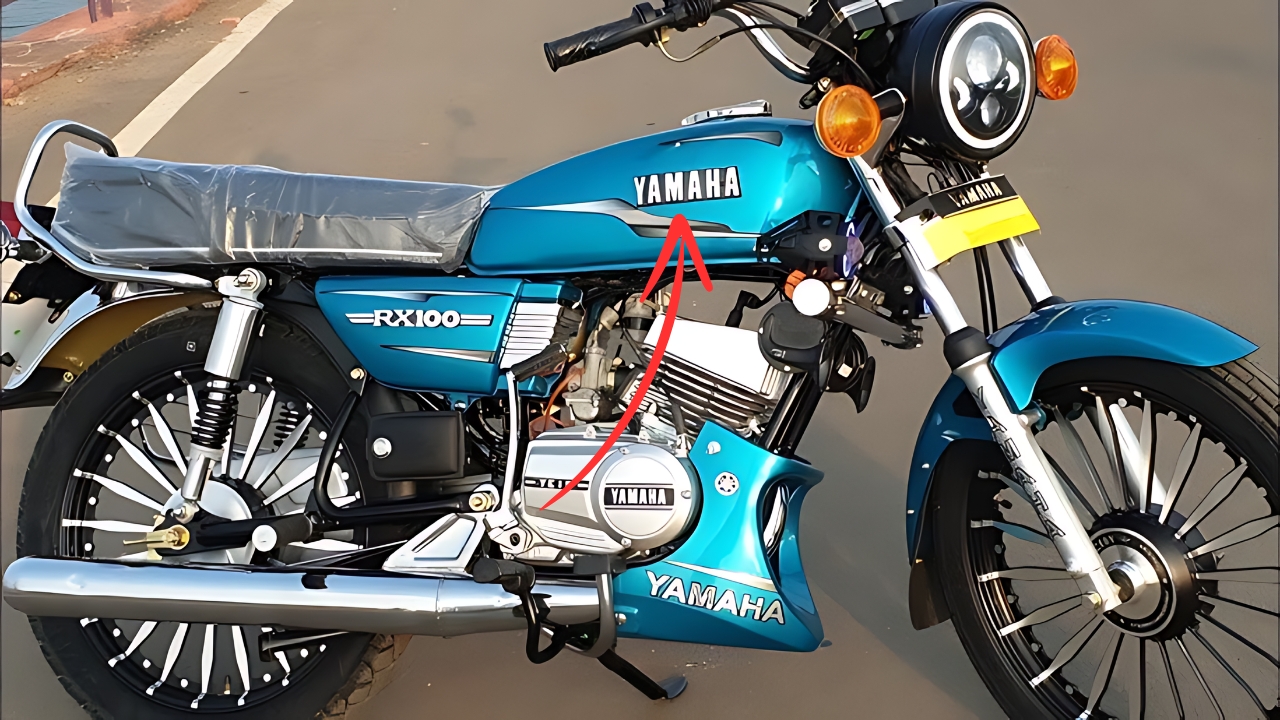In the annals of Indian motorcycling history, few bikes have left as indelible a mark as the Yamaha RX100. This iconic two-stroke marvel, first introduced in 1985, quickly became the stuff of legends, capturing the hearts of riders across the subcontinent. Let’s take a nostalgic ride through the legacy of this unforgettable machine.
The Birth of a Legend
The Yamaha RX100 roared onto Indian roads at a time when the motorcycle market was dominated by fuel-efficient, but often uninspiring commuter bikes. Yamaha, sensing an opportunity, decided to shake things up with a bike that promised not just transportation, but exhilaration.
The RX100’s arrival was nothing short of a revolution. Here was a bike that looked good, sounded even better, and most importantly, went like the clappers. It was the perfect recipe for success in a market starved for excitement.
Design: Simplicity Meets Aggression
The RX100’s design was a masterclass in understated aggression:
- Sleek, no-nonsense fuel tank
- Chrome-plated mudguards that gleamed in the sun
- Round headlamp that became its signature look
- Slim profile that belied its performance potential
The bike’s design was timeless, looking as good on its last day of production as it did on its first. It wasn’t trying to be flashy; it was confident in its own skin, much like the riders who chose it.
Performance: The Heart of the Beast
At the core of the RX100’s appeal was its engine:
- 98cc, two-stroke, air-cooled single-cylinder engine
- Power output of 11 bhp at 7,500 rpm
- Torque of 10.39 Nm at 6,500 rpm
- Top speed of around 120 km/h
These numbers might not seem impressive by today’s standards, but back in the day, they were nothing short of revolutionary. The RX100 could hit 60 km/h from a standstill in just 7.5 seconds, a feat that left many of its contemporaries in the dust.
The engine’s character was as important as its output. The distinctive two-stroke growl, the plume of blue smoke, and the sudden burst of acceleration when the power band kicked in – these were the things that made riders fall in love with the RX100.
Riding Experience: Pure, Unadulterated Joy
Riding the RX100 was an experience that bordered on the spiritual for many enthusiasts. The lightweight chassis (weighing just 103 kg) made it incredibly nimble, while the responsive throttle meant that power was always just a twist away.
The bike’s simplicity was part of its charm. There were no riding modes, no traction control, no ABS – just you, the bike, and the road. It was raw, unfiltered motorcycling at its finest.
Cultural Impact: More Than Just a Motorcycle
The RX100 wasn’t just a mode of transport; it was a cultural phenomenon. It became the bike of choice for young men looking to make a statement. In many parts of India, it was seen as a status symbol, a sign that you’d arrived.
Movies and pop culture embraced the RX100, further cementing its iconic status. It became the go-to bike for chase scenes in Bollywood films, its distinctive exhaust note providing the perfect soundtrack for high-octane pursuits.
The End of an Era… Or Is It?
Production of the RX100 ceased in 1996, much to the dismay of its legion of fans. However, the legend lived on. Used RX100s became prized possessions, often selling for more than their original price.
The bike’s enduring popularity has led to persistent rumors of its revival. While Yamaha has introduced spiritual successors like the RX135 and the RXZ, none have quite captured the magic of the original.
Legacy and Influence
The impact of the RX100 on Indian motorcycling cannot be overstated. It showed that there was a market for performance-oriented bikes in India, paving the way for future sports bikes.
Many of today’s motorcycle enthusiasts cut their teeth on the RX100. Its simplicity made it the perfect bike to learn the basics of motorcycle maintenance, while its performance encouraged riders to hone their skills.
The RX100 Today: A Collector’s Dream
Today, well-maintained RX100s are highly sought after by collectors and enthusiasts. Restoration projects have become popular, with people going to great lengths to return these bikes to their former glory.
The RX100 has also spawned a thriving aftermarket scene. From performance upgrades to custom bodywork, there’s a whole industry dedicated to keeping the RX100 dream alive.
Yamaha RX100 : A Timeless Icon
In an age of fuel injection, ABS, and ride-by-wire throttles, the Yamaha RX100 might seem like a relic. But to dismiss it as such would be to miss the point entirely. The RX100 represents a purer, more visceral form of motorcycling – one that prioritizes the connection between rider and machine above all else.
Its legacy lives on not just in the bikes that followed it, but in the memories of those who rode it. For many, the distinctive smell of two-stroke oil and the spine-tingling growl of an RX100 engine are enough to transport them back to a time when motorcycling was simpler, rawer, and in many ways, more exciting.
The Yamaha RX100 may no longer be in production, but its spirit lives on. It remains a testament to the idea that sometimes, less really is more. In an increasingly complex world, the simple pleasures offered by bikes like the RX100 are more valuable than ever.
Long live the king of Indian two-strokes – the unforgettable Yamaha RX100.
